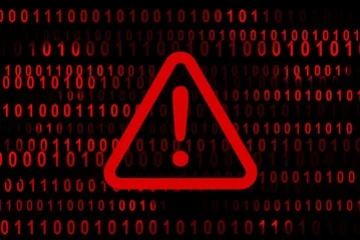Understanding & Protecting Against the New Noodle RAT Backdoor Threat

A new backdoor, "Noodle RAT" has caused widespread alarm across the cybersecurity landscape. Research highlights this previously undisclosed malware used by Chinese-speaking groups engaged in cybercrime and espionage activities.
This article seeks to provide a thorough understanding of this threat for Linux administrators who wish to better protect themselves against Noodle RAT and similar attacks. We'll focus specifically on the Linux variant of this cross-platform malware and how it infects targeted systems.
Understanding Noodle RAT
 Since 2022, Noodle RAT has been under scrutiny due to targeted attacks in the Asia-Pacific region. At first, it was thought to be part of existing malware such as Gh0st RAT or Rekoobe, but intensive research revealed it as being brand new. The malware, available on Windows and Linux, has been employed by Chinese-speaking groups for espionage and cybercrime activities, demonstrating its widespread impact. Noodle RAT typically exhibits capabilities such as downloading/uploading files/running additional in-memory modules, and acting as TCP proxy on infected computers, underscoring its widespread usage among target systems.
Since 2022, Noodle RAT has been under scrutiny due to targeted attacks in the Asia-Pacific region. At first, it was thought to be part of existing malware such as Gh0st RAT or Rekoobe, but intensive research revealed it as being brand new. The malware, available on Windows and Linux, has been employed by Chinese-speaking groups for espionage and cybercrime activities, demonstrating its widespread impact. Noodle RAT typically exhibits capabilities such as downloading/uploading files/running additional in-memory modules, and acting as TCP proxy on infected computers, underscoring its widespread usage among target systems.
The Linux Version of Noodle RAT: How Does It Infect Targeted Systems?
Linux.NOODLERAT stands out from its Windows counterpart through its design and capabilities, which have been widely employed for financial gain and espionage purposes by various groups for their ends. Employed for different motivations, including financial gains or spying operations, its design features include reverse shell functionality, file download/upload features, scheduling execution of scheduled processes, and SOCKS tunneling capabilities. After infiltrating public-facing applications, the backdoor copies itself to an identified location before performing process name spoofing and connecting back with its C&C server per predefined settings, making its design unique from its Windows counterpart regarding design vs. capabilities.
Practical Advice for Protecting Against Noodle RAT and Similar Threats
 With cyber threats evolving almost daily, Linux administrators must take proactive measures to ward off threats like Noodle RAT. Here are several practical steps you can take to reinforce the security posture of your systems:
With cyber threats evolving almost daily, Linux administrators must take proactive measures to ward off threats like Noodle RAT. Here are several practical steps you can take to reinforce the security posture of your systems:
- Implement Comprehensive Access Controls: Comprehensive access controls and user permissions can significantly limit unauthorized access and help stop the installation and execution of malicious payloads.
- Prioritize Regular System Updates and Patch Management: Timely installation of software updates and security patches can address known vulnerabilities exploited by backdoors like Noodle RAT.
- Implement Strong Authentication Measures: Establishing multifactor authentication and enforcing robust password policies are great strategies for protecting against any unauthorized access attempts.
- Utilize Network Segmentation: Dividing the network into distinct zones according to traffic patterns and user roles can help contain malware spread and limit its impact in case of breach.
- Implement Intrusion Detection and Prevention Systems: Installing and configuring effective intrusion detection and prevention systems is one way to detect and respond quickly to attempted infiltration by Noodle RAT or similar threats.
- Utilize Behavior-Based Monitoring: Behavior-based monitoring tools can enable administrators to detect suspicious and potentially malicious behaviors that indicate backdoor activities.
- Regular Security Audits and Penetration Testing: Conducting periodic security audits and penetration tests is one way to identify vulnerabilities before threat actors exploit them.
- User Education and Awareness Programs: Raising users' awareness of the potential dangers of social engineering tactics and phishing attacks can significantly lower the odds of successful backdoor installations.
Our Final Thoughts on Noodle RAT & Preventing Attacks
Noodle RAT's rise as an emerging backdoor threat underscores the necessity of strong cybersecurity measures for Linux systems. By understanding its functionality and employing proactive security practices to strengthen defenses against this malicious malware, administrators can better protect themselves and reduce the risks from falling victim. As the cyber threat landscape changes rapidly, remaining vigilant and proactive when protecting essential infrastructure and sensitive data against emerging threats like Noodle RAT is imperative for maintaining and securing its integrity and safety.


















